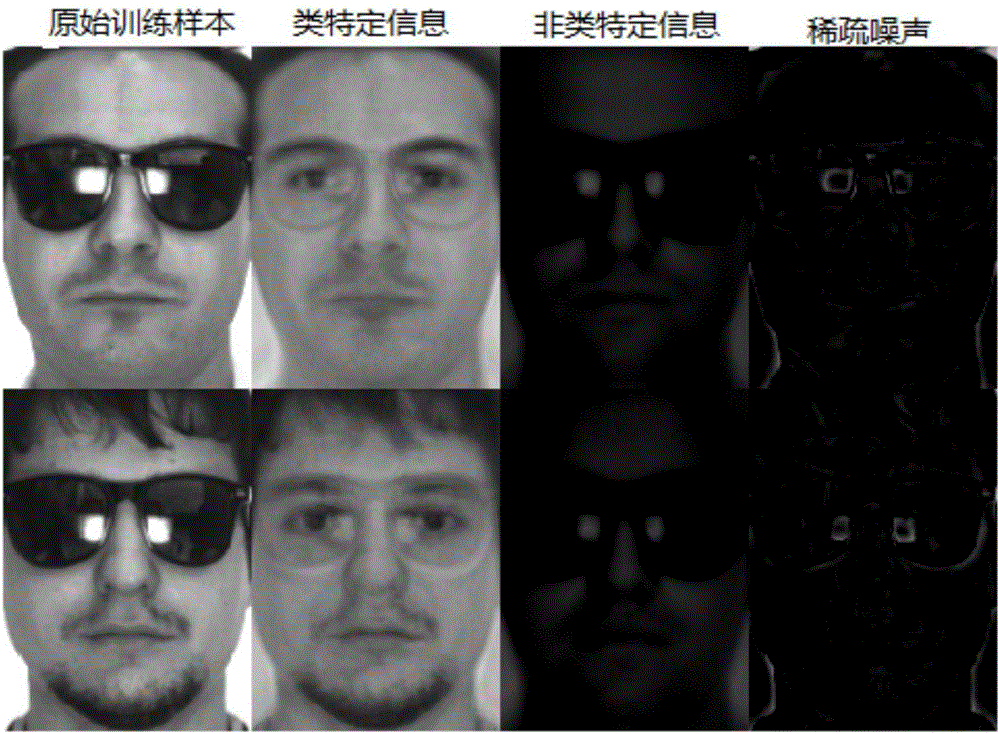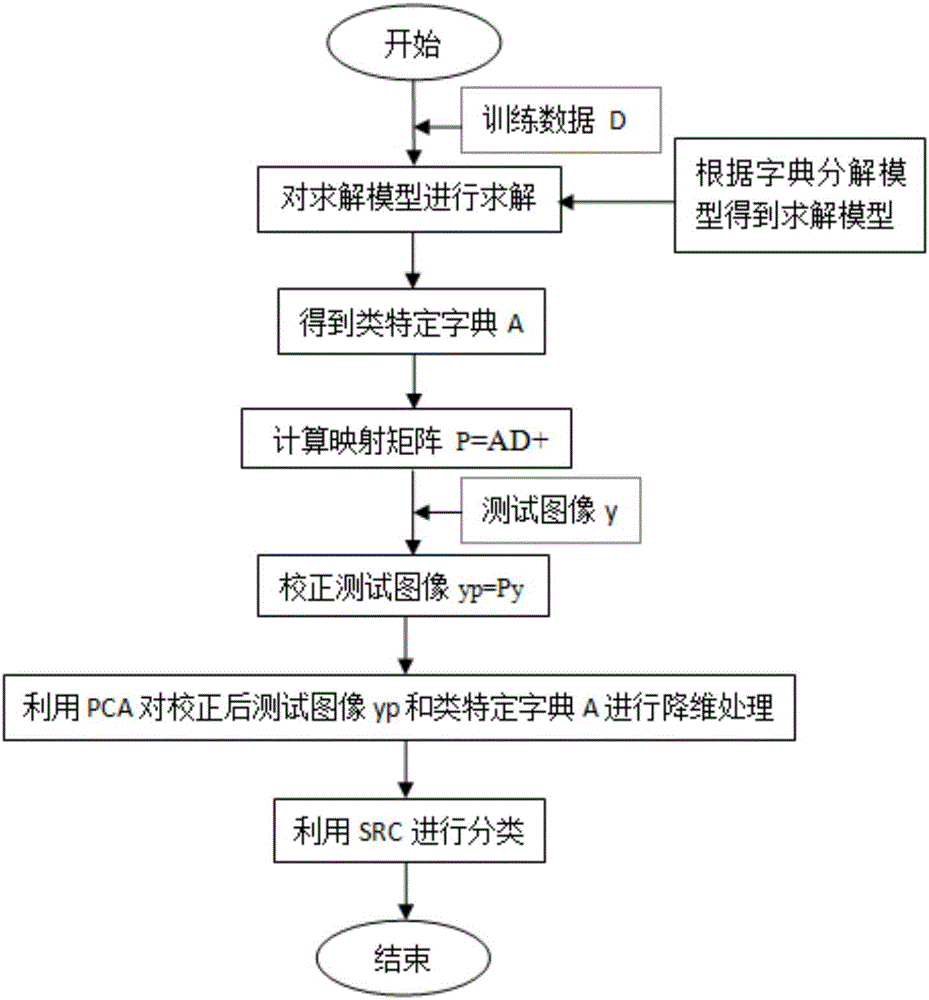Robust face recognition method based on dictionary decomposition and sparse representation
A sparse representation and robust person technology, applied in the field of robust face recognition, can solve the problem of SRC being ineffective
- Summary
- Abstract
- Description
- Claims
- Application Information
AI Technical Summary
Problems solved by technology
Method used
Image
Examples
Embodiment Construction
[0077] The present invention designs a large number of experiments to verify the method of the present invention. The present invention will be further described below in conjunction with the AR face database covered by sunglasses.
[0078] The AR face database has a total of 100 different individuals, including 50 females and 50 males, and each person has 26 pictures. Among the 26 pictures, the 1st to 7th and the 14th to 20th pictures only contain For the pictures of expression and light changes, the 8th to 10th and 21st to 23rd pictures are pictures with sunglasses occlusion, and the 11th to 13th and 24th to 26th pictures are occlusion pictures with silk scarves. Each image is cropped to a size of 165×120 pixels, and then each image is pulled into a column vector to form a 19800×2600 matrix.
[0079] This example selects the 1st to 7th pictures without occlusion in the database and randomly selects a picture with sunglasses occlusion from the 8th to 10th pictures as training...
PUM
 Login to View More
Login to View More Abstract
Description
Claims
Application Information
 Login to View More
Login to View More - R&D
- Intellectual Property
- Life Sciences
- Materials
- Tech Scout
- Unparalleled Data Quality
- Higher Quality Content
- 60% Fewer Hallucinations
Browse by: Latest US Patents, China's latest patents, Technical Efficacy Thesaurus, Application Domain, Technology Topic, Popular Technical Reports.
© 2025 PatSnap. All rights reserved.Legal|Privacy policy|Modern Slavery Act Transparency Statement|Sitemap|About US| Contact US: help@patsnap.com



